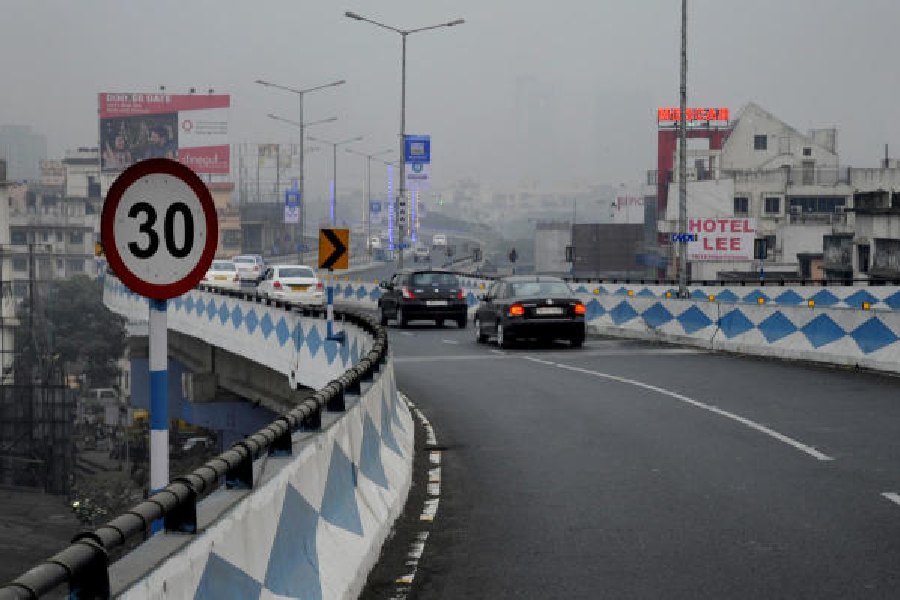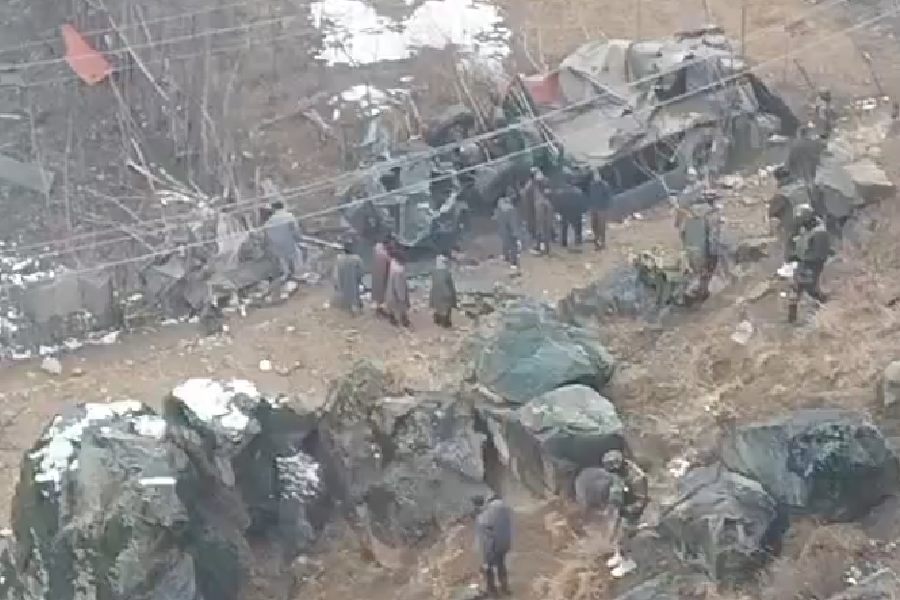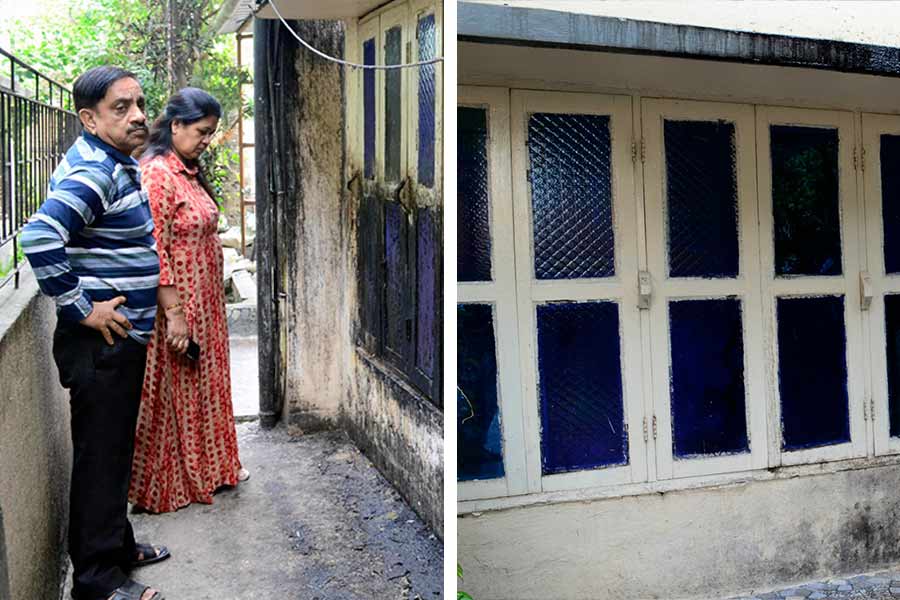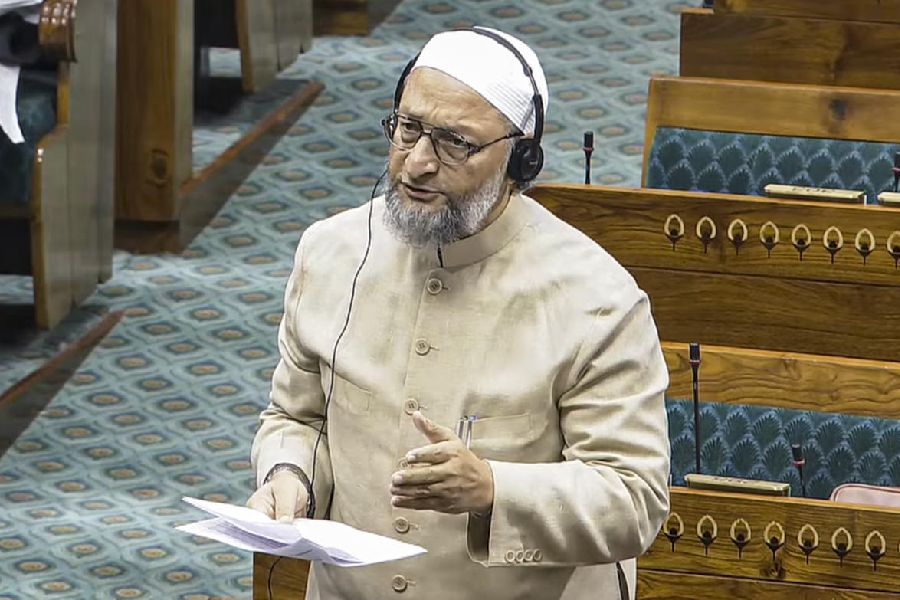Two bridges in the city that the authorities had initially planned to dismantle because of safety concerns are now being retrofitted with steel support and given a fresh lease of life.
The Baghajatin Railway overbridge, from which chunks of concrete fell off twice in the last six years, is undergoing retrofitting now. The work is expected to be completed by March.
The first phase of retrofitting of the Chingrighata flyover is complete and a fresh round of assessment of the health of the bridge will be done soon.
Retrofitting has been planned for four more bridges, said an official of Kolkata Metropolitan Development Authority (KMDA), the agency maintaining these structures.
Travelling under the Baghajatin flyover, one can see new steel structures under the bridge and along its sides. These have been put to strengthen the bridge, said an engineer of the KMDA, the state government organisation executing the project to retrofit the bridge.
“The quality of the concrete of Baghajatin bridge had deteriorated. In the last six years, chunks of the deck slab (on which cars run) in two places fell off twice. Traffic had to be shut down on the Patuli-bound flank twice for repairs,” said a KMDA engineer.
A health assessment study was undertaken and it showed that the strength of the concrete had weakened. The engineer said pulling down the bridge and building a
new one had been discussed as an option.
“But it would have created huge difficulties in managing traffic. We decided to strengthen the bridge,” he said.
As part of the strengthening work, the engineers put up support structures under the bridge. “We built new steel structures that will do the work of columns. We have installed three such steel columns under each span. As a result, the load on the span is now being handled by more columns and this will keep the bridge safe,” said the engineer.
A span is the surface of a bridge between two columns. A bridge is made of multiple such spans and the number of spans in a bridge depends on the length of the bridge as well as the length of each span.
“The steel columns have been dug into the soil and go up to support the bridge. We had to stabilise the soil under the bridge for the steel structures to stand on them,” said the engineer.
The work has cost ₹42 crore and once complete, it will enhance the life of the bridge by 50 years. “The bridge can be used for another 50 years after the retrofitting is complete,” said the engineer.
The Baghajatin Railway overbridge that connects Patuli with Hiland Park is actually two parallel bridges built over a gap of 11 years. The portion now used by Patuli-bound vehicles is an older bridge built in 1998, while the portion used by Ruby-bound vehicles was built in 2009.
The KMDA has also done similar retrofitting of the Chingrighata flyover.
A recommendation to pull down the Chingrighata flyover — the gateway to Sector V and New Town from EM Bypass for hundreds of cars every day — was made in 2020 by a committee set up to study the health of the bridge.
The assessment team found that the construction of the flyover, which was opened to public in the mid-2000s, had flaws. Deflection — sagging of the surface — was noticed in the deck of the flyover. The health assessment also spotted problems in the piers of the flyover.
But a section of engineers in the state government had opposed the proposal and said the bridge could be strengthened and be in use for many years.
“We have done some retrofitting work of the Chingrighata flyover. A fresh round of health assessment will be done to see if there is any strain on the bridge. If required, more retrofitting will have to be done,” said the engineer.
The KMDA started the health assessment of 20 bridges and flyovers in its custody after the collapse of the Majerhat bridge in 2018.
“Strengthening of Jibananda Setu in Sealdah, Chetla bridge, Dhana Dhanya bridge in Alipore and Tollygunge Karunamoyee bridge is also on the cards,” said the engineer.











